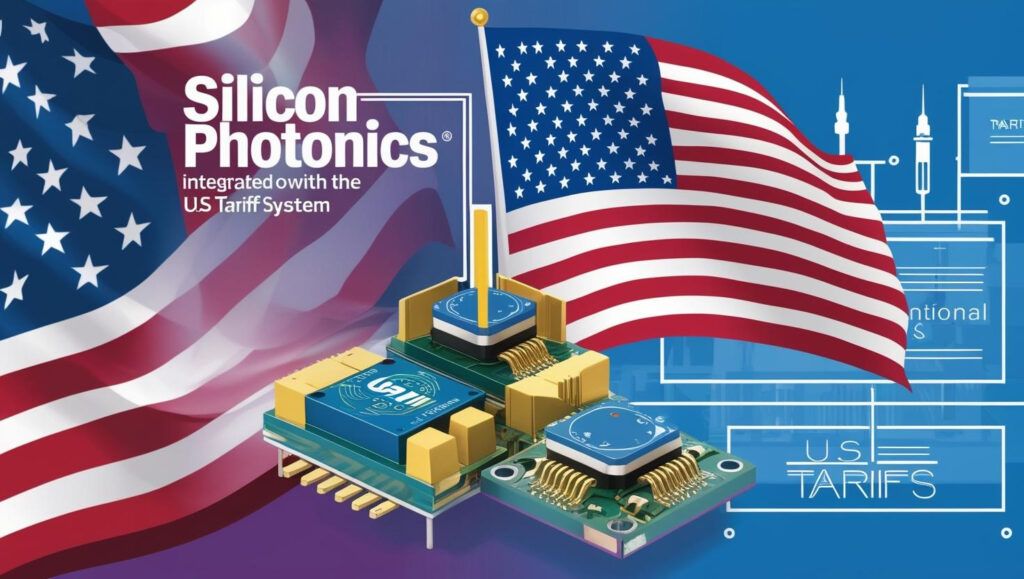The global silicon photonics market, which enables ultra-fast data transmission for applications in data centers, 5G networks, and high-performance computing, witnessed significant headwinds during the Trump administration’s tariff regime. Aimed primarily at reducing U.S. dependency on Chinese technology, these tariffs inadvertently disrupted the highly interconnected global supply chains that the silicon photonics industry relies on. From increased costs of critical components to delayed innovation cycles, the impact was felt across multiple tiers of the market.
As the world transitions into an era defined by cloud computing, AI workloads, and next-gen communication infrastructure, understanding how the Trump-era tariffs reshaped the silicon photonics landscape is key for stakeholders preparing for future geopolitical uncertainties.

Book Your “Trump Tariff Threat Assessment”
https://www.marketsandmarkets.com/pdfdownloadNew.asp?id=116
Tariff-Driven Disruptions
1. Supply Chain Interruption
Silicon photonics components such as transceivers, lasers, modulators, and photodetectors often involve a multinational production process. The imposition of tariffs on components and materials sourced from China disrupted this flow, causing delays, logistical complexity, and cost overruns.
2. Increased Manufacturing Costs
Key raw materials and subassemblies imported from China and other Asian economies faced higher import duties. For companies operating on thin margins, especially in optical transceiver manufacturing, this translated to reduced profitability or the need to pass on costs to customers.
3. Innovation Bottlenecks
Startups and mid-sized enterprises focused on silicon photonics innovation found themselves reallocating R&D budgets to cover increased procurement costs. This slowed the pace of development, testing, and product rollouts—at a time when demand for photonics solutions was surging.
4. Geopolitical Risk Exposure
The industry’s dependence on a globalized supply chain made it vulnerable to geopolitical tensions. The tariffs served as a wake-up call for U.S. companies to reassess reliance on foreign suppliers and prompted early moves toward localizing manufacturing.
Global Market Implications
Despite these challenges, the global silicon photonics market continued to grow, driven by exponential data growth, cloud adoption, and 5G deployment. However, the pace of growth may have been stronger in the absence of trade friction. Non-U.S. firms, particularly in Europe and East Asia, gained a competitive edge by avoiding tariff-induced costs.
Additionally, U.S. tech companies increasingly turned to domestic suppliers or sought partners in countries unaffected by tariffs, reshaping trade flows and spurring regional diversification.
Strategic Responses by Industry Players
- Supply Chain Diversification: Firms began shifting manufacturing and sourcing from China to Vietnam, Taiwan, and India to bypass tariffs.
- Domestic Manufacturing: Some companies accelerated investments in U.S.-based fabrication and packaging facilities, supported by initiatives like the CHIPS and Science Act.
- Alliances and M&A: Strategic collaborations and acquisitions were pursued to strengthen vertical integration and internal capabilities.
Opportunities Amid Challenges
While the tariffs posed short-term disruptions, they catalyzed long-term strategic shifts that may benefit the industry:
- Localized Ecosystems: Strengthened domestic capabilities in the U.S. could reduce future exposure to trade risks.
- Government Incentives: Tariff-driven awareness has helped rally bipartisan support for semiconductor and photonics manufacturing incentives.
- Innovation in Packaging and Integration: Companies have responded by advancing hybrid integration and co-packaged optics to reduce dependency on certain foreign-made components.
The Trump administration’s tariffs had a measurable impact on the global silicon photonics market, slowing innovation, raising costs, and exposing the fragility of international supply chains. However, they also sparked a re-evaluation of sourcing strategies, drove demand for domestic capabilities, and encouraged more resilient industry structures. As the market continues to evolve, stakeholders will need to balance globalization benefits with the need for supply chain security and policy foresight.